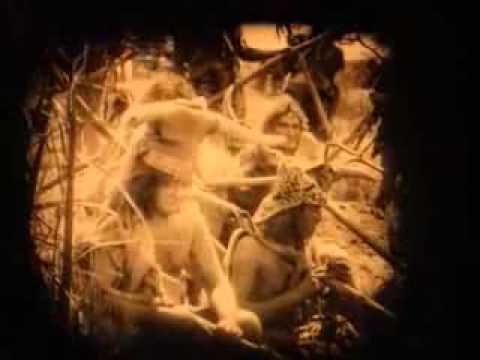A History of Screenwriting – 36 in a series – Intolerance (1916) – D.W. Griffith
Intolerance is a 1916 epic silent film directed by D. W. Griffith. Subtitles include Love’s Struggle Throughout the Ages and A Sun-Play of the Ages.[2][3]
Widely regarded as one of the great masterpieces of the silent era, as well as one of the first art films,[3] the three-and-a-half-hour epic intercuts four parallel storylines, each separated by several centuries: (1) a contemporary melodrama of crime and redemption, (2) a Judean story: Christ‘s mission and death, (3) a French story: the events surrounding the St. Bartholomew’s Day massacre of 1572, and (4) a Babylonian story: the fall of the Babylonian Empire to Persia in 539 BC. Each story had its own distinctive color tint in the original print.[3] The scenes are linked by shots of a figure representing Eternal Motherhood, rocking a cradle.[3]
Intolerance was made partly in response to criticism of Griffith’s previous film, The Birth of a Nation (1915),[4] which was criticized by the NAACP and other groups as perpetuating racial stereotypes and glorifying the Ku Klux Klan.[5] It was not—as is commonly implied—an apology for the racism of his earlier film;[6]in numerous interviews, Griffith made clear that the film’s title and overriding themes were meant as a response to those who he felt had been intolerant of him in condemning The Birth of a Nation.[7] In the years following its release, Intolerance would strongly influence European film movements despite its lack of commercial success domestically. —Wikipedia
* A portion of each sale from Amazon.com directly supports our blogs ** Many of these books may be available from your local library. Check it out!
I teach several classes for the Stephens College Low-Residency MFA in Screenwriting, including History of Screenwriting. In fact, I created the curriculum for that course from scratch and customized it to this particular MFA in that it covers ‘Screenwriting’ (not directors) and even more specifically, the class has a female-centric focus. As part History of Screenwriting I, the first course in the four-class series, we focus on the early women screenwriters of the silent film era who male historians have, for the most part, quietly forgotten in their books. In this series, I share with you some of the screenwriters and films that should be part of any screenwriters education. I believe that in order to become a great screenwriter, you need to understand the deep history of screenwriting and the amazing people who created the career. — Dr. Rosanne Welch
